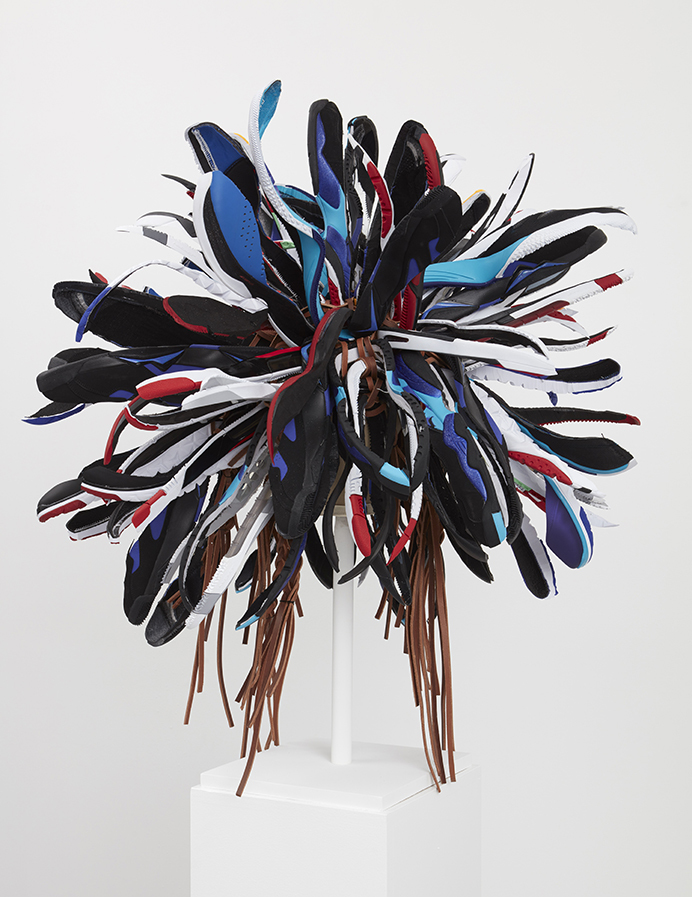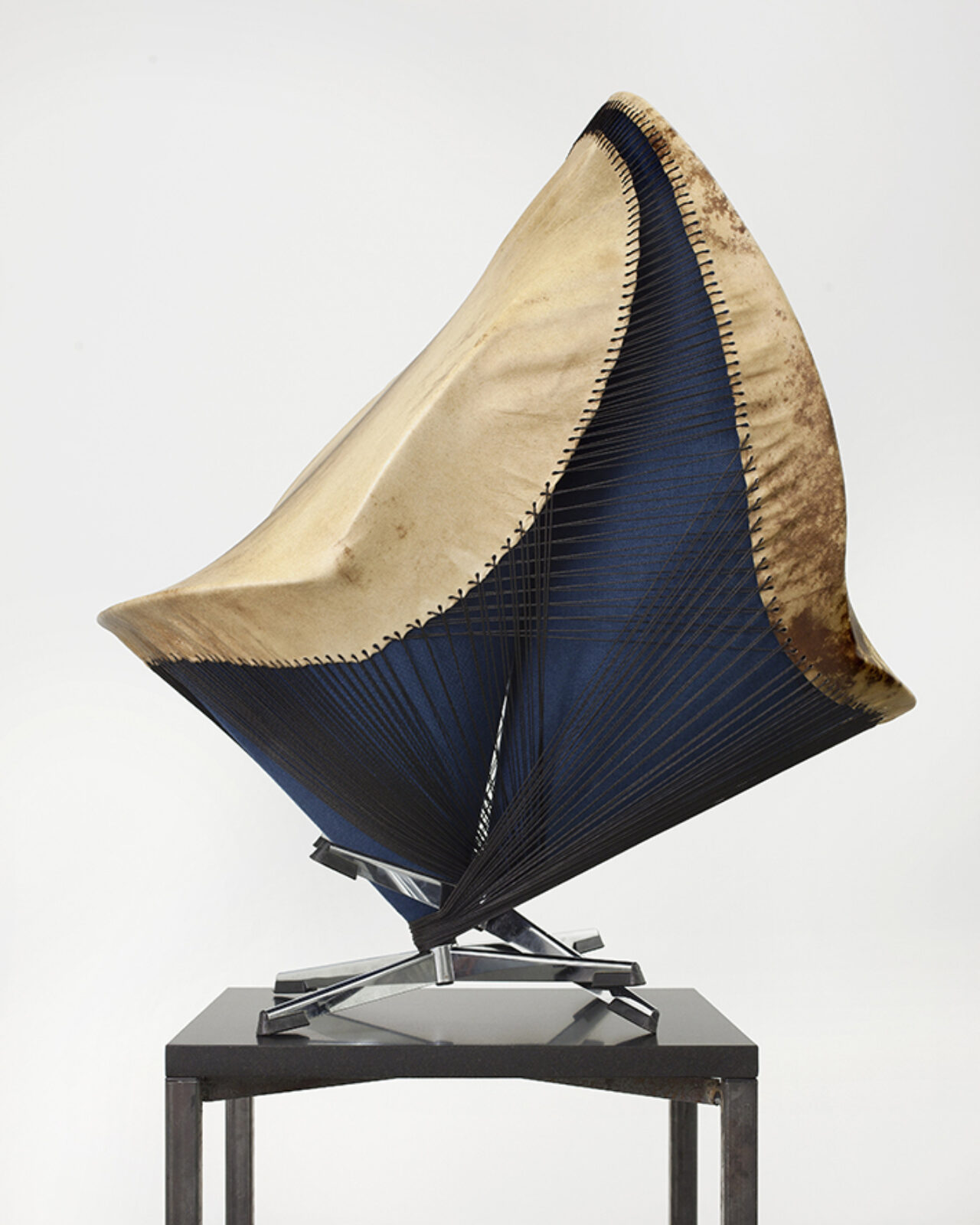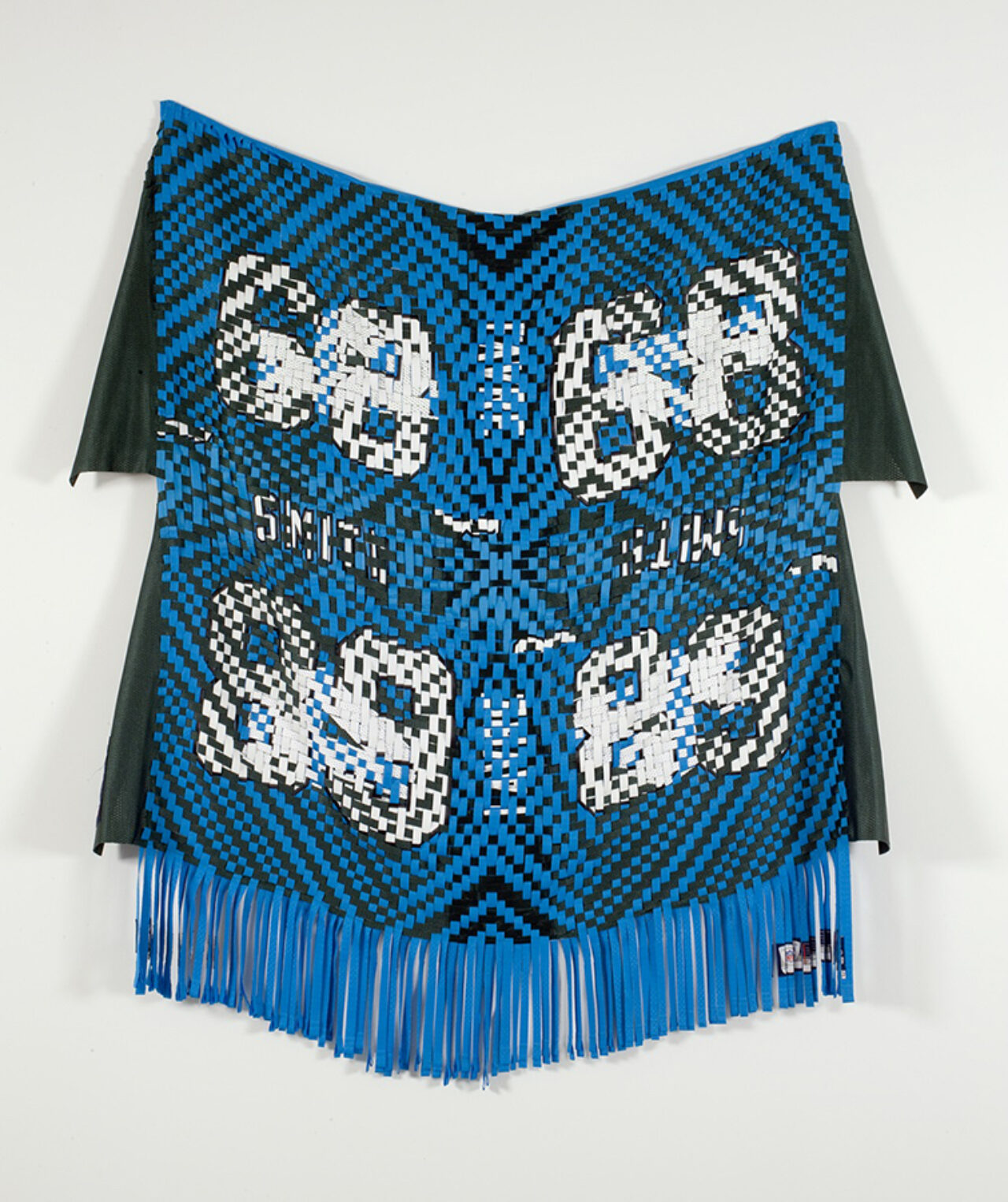Sprawling new Brian Jungen solo exhibition currently showing at the Art Gallery of Ontario

Posted on | Updated
The show marks the first time the AGO has hosted a solo exhibition by an Indigenous Canadian artist in its most prominent gallery space.
Brian Jungen: Friendship Centre, a sprawling new solo exhibition of current and past works by acclaimed interdisciplinary artist and Emily Carr University of Art + Design alum Brian Jungen, is currently showing at the Art Gallery of Ontario (AGO).
Curated by Kitty Scott, the AGO’s Carol and Morton Rapp Curator of Modern and Contemporary Art, the show brings together more than 80 of the Swiss-Dane-Zaa’s artworks spanning more than two decades. The collected works include “the majority” of Jungen’s freestanding sculptures and masks, according to the AGO — some of which are being shown in Canada for the first time.
A number of these artworks are drawn from the artist’s landmark Prototype for New Understanding (1998-2005) series, the first eight pieces of which debuted at the Charles H. Scott Gallery on Emily Carr’s former campus on Granville Island, in Vancouver, BC.
Also on display is Cetology (2002), the stunning, 40-foot long sculpture of a whale skeleton made from plastic deck chairs. The work is on loan from the Vancouver Art Gallery.
Jungen’s exhibition marks the first time the AGO has hosted a solo show by an Indigenous Canadian artist in the Sam & Ayala Zacks Pavilion — a gallery which, according to the AGO, hosts the facility’s “most prominent” exhibitions.
“With this exhibition, I am thinking about where I came from, and where I might be going,” Jungen said in a statement.
“I am excited to be able to take a look at my body of work — both existing and new — and present it at the AGO in a reimagined way.”
As part of the show, Jungen turned one of the galleries in the Zacks Pavilion into a “gymnasium” featuring a basketball-court-style floor and hoops hung high on the walls, designed by the artist for the occasion.
In the exhibition catalogue, curator Kitty Scott recounts how, early on in the exhibition-planning process, Jungen explained some of the impetus behind his intention to transform one of the AGO’s exhibition spaces in this way.
“He spoke about how the gym is an important gathering place for Indigenous people, whether in a school or at a Friendship Centre,” she recalls.
The black flooring and neon court lines make for a striking backdrop to Jungen’s sculptures and wall-works.
Writes Kitty: “With Friendship Centre, the artist is asking us to imagine the Art Gallery of Ontario as an important Indigenous space. The gymnasium—open and multipurpose—is a crucial hub on reserve. Schoolchildren and adults use this meeting space for recreation, but it is also where the band council gathers, where powwows and luncheons are held. It is the beating heart of the community. Friendship Centres have a different but related purpose. For First Nations, Inuit, and Métis peoples living in cities, Friendship Centres (which date back to the 1950s) provide vital resources such as health and cultural services and counselling for housing and employment. Toronto’s Native Canadian Centre is open to any resident or visitor regardless of race, religion, gender, class, or nationality. The gyms in the Centres are important gathering spaces.
“By sharing the ethos of the Friendship Centre and the gymnasium in the context of an art gallery, Jungen highlights the differences across the institutions. While these spaces profess to be open to all, you must buy a ticket to enter the AGO. This subtle layering of distinct spaces and experiences is typical of Jungen’s mode of thinking, collaging Indigenous and the settler perspectives, ideas, and ideologies in ways that are mutually estranging.”

